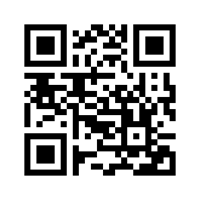
Goddard Space Flight Center, Greenbelt, Maryland 20771
ENGINEERING COLLOQUIUM
Monday, February 23, 2015 / 3:30 PM, Building 3 Auditorium
J.-C. Liou
"Laboratory-Based Satellite Impact Experiments for Better Characterization of the Orbital Debris Populations"
ABSTRACT -- A consortium consisting of the NASA Orbital Debris Program Office, U.S. Air Force's Space and Missile Systems Center, The Aerospace Corporation, and University of Florida conducted two hypervelocity impact experiments on mockup targets at the U.S. Air Force's Arnold Engineering Development Complex (AEDC) in April 2014. The target for the first experiment resembled a rocket upper stage whereas the target for the second experiment represented a typical 60-cm/56-kg class payload that incorporated modern spacecraft materials and components as well as exterior wrap of multi-layer insulation (MLI) and three solar panels. The projectile was designed with the maximum mass that AEDC's Range G two-stage light gas gun could accelerate to a planned impact speed of 7 km/sec. The impact energy exceeded 13 MJ, leading to catastrophic destruction of each target after the impact. Low density foam panels were installed inside the target chamber to slow down and soft-catch the fragments for post-impact processing. Diagnostic instruments, such as x-ray and high speed optical cameras, were also used to record the breakup process.
The main goal of this "DebriSat" project is to characterize the physical properties, including size, mass, shape, and density distributions, of orbital debris that would be generated by a hypervelocity collision involving an upper stage or a modern satellite in the low Earth orbit environment. In addition, representative fragments will be selected for laboratory optical, spectral, and radar measurements to allow for better interpretation of data obtained by telescope and radar observations. This presentation will provide a summary of the impact results and the plans to process, measure, and analyze the fragments.
SPEAKER -- Dr. Jer Chyi “J.-C.” Liou is NASA Chief Scientist for Orbital Debris.
Dr. Liou has a BS in physics from the National Central University in Taiwan, and an MS and PhD from the University of Florida.
He came to NASA as National Research Council post-doctoral research fellow. His topic then was asteroids and naturally occurring dust in the Solar System.
His work on orbital debris began when, as a contractor with GB Tech, he supported the NASA Orbital Debris Program Office (ODPO). He joined the ODPO as a civil servant after having served in various contractor positions, such as project manager for the Lockheed Martin orbital debris team.
Dr. Liou led the development of two NASA orbital debris models and had led studies of the evolution and possible remediation of orbital debris. He has directed the OPDO in developing technologies for orbital debris and micrometeoroid impact detection, along with being the lead for the DebriSat laboratory impact tests.
Besides writing many articles himself, he was Technical Editor for the NASA Orbital Debris Quarterly News between 2003 and 2014. Dr. Liou has received the Silver Snoopy Award, the JSC Director’s Commendation Award, and the NASA Exceptional Engineering Achievement Medal.
Colloquium Committee Sponsor: Brent Warner
Engineering Colloquium home page: https://ecolloq.gsfc.nasa.gov